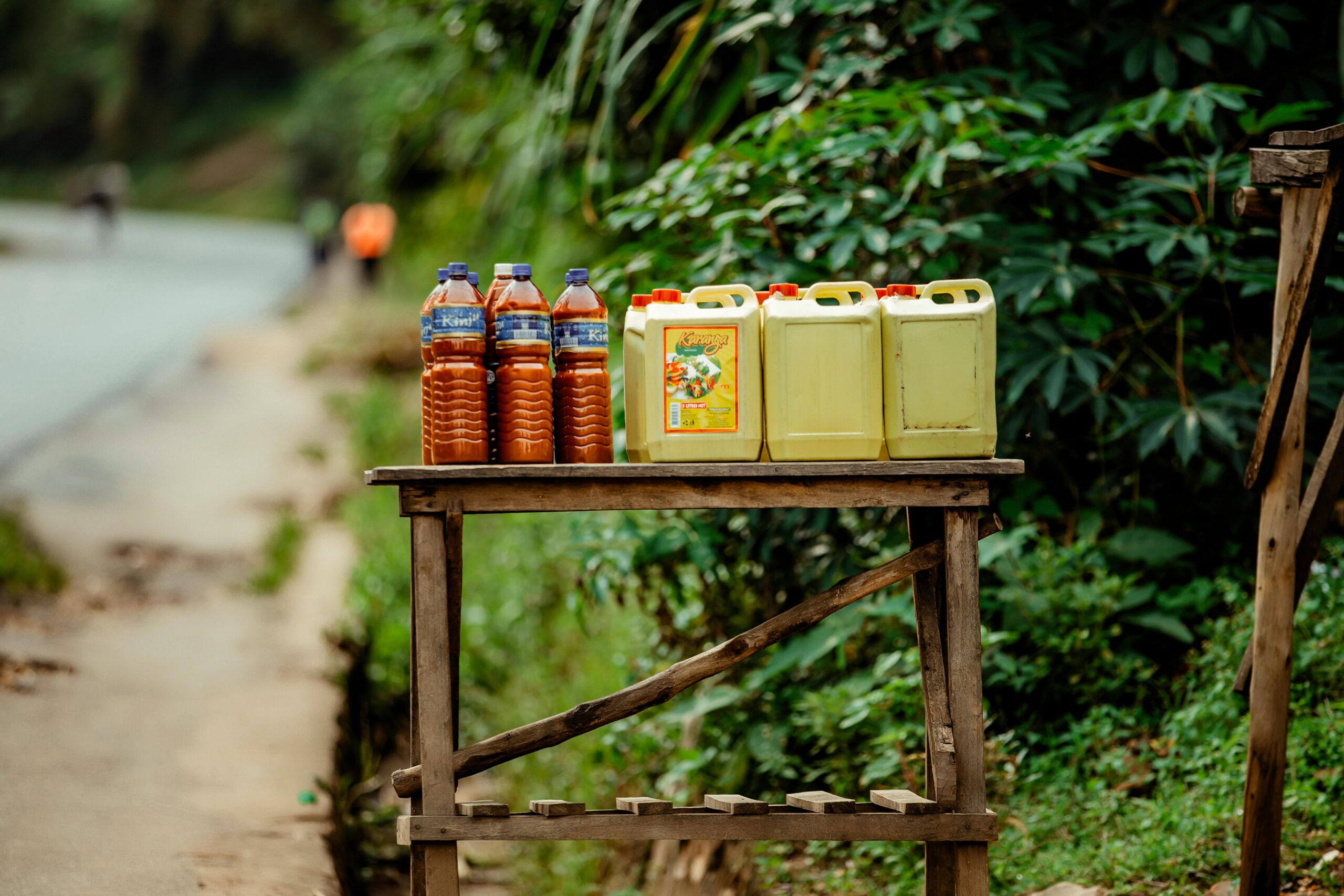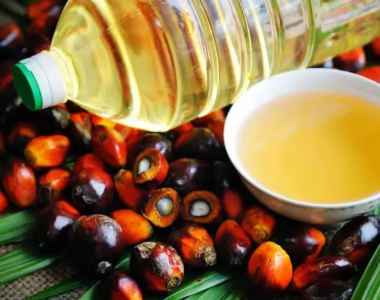No products in the cart.

Palm oil, pressed from the fruits of the African oil palm (Elaeis guineensis), has been part of African life for centuries—flavoring home kitchens, fueling small industries, and anchoring rituals and livelihoods. Today, it moves through urban supermarkets and village markets alike, connecting smallholder harvesters to cooks, soap makers, and cosmetics entrepreneurs. Its deep red hue, earthy aroma, and versatility give it an everyday presence, while its cultural meanings reach far beyond the pot.
Everyday Uses of Palm Oil Across Africa Today
From Lagos to Kinshasa and Freetown to Douala, red palm oil remains a kitchen essential. Its unmistakable color and flavor underpin iconic dishes—Ghanaian palm nut soup, Nigeria’s banga and egusi stews, Sierra Leonean plasas, and Congolese moambe. Street foods such as fried plantain, akara (bean fritters), and cassava-based snacks often rely on palm oil for its high heat tolerance and savory depth. Unrefined “red” palm oil carries natural carotenoids and a distinctive taste, while refined palm oil, paler and more neutral, shows up in commercial frying and packaged foods.
Beyond the home cook, today’s food manufacturers use palm and palm kernel oils in breads, biscuits, instant noodles, margarine, and confectionery because they are semi-solid at room temperature and stable under heat. Palm kernel cake, a by-product of pressing, is an affordable protein source in animal feed for poultry and small ruminants, helping close loops in local agri-food systems. In many small mills across West and Central Africa, leftover shells and fiber from the fruit bunches heat boilers or fire stoves, offering low-cost energy.
Palm oil also powers a constellation of household and beauty products. Local artisans and SMEs produce traditional soaps and modern detergents with palm and palm kernel oils, prized for their cleansing and foaming properties. Body creams, pomades, and hair products frequently blend palm-derived ingredients, balancing affordability with performance. As demand rises, questions of health and sustainability follow: unrefined red palm oil can help address vitamin A deficiency when used in moderation, while refined types lose many carotenoids; expansion of plantations raises biodiversity and land-rights concerns. Certification schemes and community-led agroforestry are emerging to align livelihoods with environmental stewardship.
Traditional and Cultural Impact of Palm Oil in Africa
Long before it became a global commodity, palm oil flowed through African economies and identities. In the 19th century, it was a pillar of “legitimate commerce” from the Niger Delta, earning the moniker “red gold” as canoes ferried casks to Atlantic ports. That trade reconfigured regional politics and labor, shaping towns like Bonny and Opobo and tying local producers to global markets in soap and lubricants. Colonial-era taxes and control over palm produce later sparked protests—such as the women-led uprisings in southeastern Nigeria—highlighting the crop’s entanglement with gendered market power and community autonomy.
Culturally, palm oil is a symbol of abundance and vitality. Its vivid red color signals celebration, and foods cooked with it often anchor festivals, funerals, and rites of passage. In some traditions, red palm oil (epo pupa) features in Yoruba Ifá rituals and cleansing practices, or is used to anoint objects and spaces during ceremonies. Healers across several regions blend palm oil with herbs as a carrier in topical remedies, while midwives and elders historically turned to it for massage, protection, and nourishment around childbirth and early infancy.
Domestic crafts and technologies grew up around the palm as well. Household soap boiling with palm oil and ash, lamp light fueled by rendered oil, and the use of kernel shells as cooking fuel all speak to a time when the palm was a comprehensive energy and hygiene resource. Even today, community-based processing—fermenting, pounding, pressing, clarifying—remains highly social, with women’s cooperatives and family groups sharing labor, skills, and value. Through these practices, palm oil sustains not just diets and incomes, but also the intergenerational knowledge that threads communities together.
Palm oil in Africa is both everyday and emblematic—an ingredient that seasons stews and shapes stories. Its modern reach spans frying pans, factories, and beauty shelves, while its traditional roles encompass ceremony, care, and community economies. As producers, consumers, and policymakers look ahead, the challenge is to keep its cultural richness and livelihood benefits alive, even as they pursue nutrition, equity, and sustainability in the groves where “red gold” begins.

